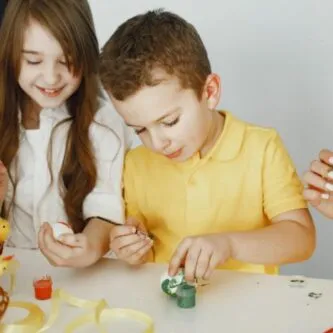
As a parent of a special needs child, the transition towards remote education has not been easy. Distance learning has created an entirely new challenge for many children who were used to receiving individualized and special education in the past. While it may not be totally possible to completely reproduce the same level of specialized attention and support that these same children received in a typical school setting, there are ways to make it easier.
A simple acknowledgment that your need to find more creative ways to support your special needs child during distance learning is the first step. Parents who may be struggling can practice a number of techniques to help bridge the gap in learning and any mental health challenges from the situation. Read on to learn more.
Give Them Encouragement and Praise
Many special needs children, especially those who struggle with behavioral or emotional development may have trouble focusing during their online classes. This may be a problem, especially since online learning depends on students sitting for hours in front of the computer to absorb all information presented to them.
During online classes, special education children may have trouble with focus and attention. More than that, the lack of real-time feedback present in the original classroom setting may make their classes difficult to manage.
As such, it’s crucial that you offer encouragement and praise to your child, whenever you can. If you’re also working from home, you can utilize non-verbal cues, such as a simple smile or nod from across the room. Doing this is a way for them to feel that their effort to remain focused and attentive are recognized during a typical remote school day.
Monitor Your Child’s Progress Periodically
You won’t always have the luxury to sit beside your child and observe how they’re doing in their classes. However, making periodic checks on their progress at school can help you gauge just how they’re adjusting to the learning setup.
For example, try to work in a location where you’re able to monitor your child from afar. Observe them and try to figure out how much time they’re devoting to their classes. Are they easily distracted after 10 minutes? 30?
At the same time, ask your child what would make their learning more comfortable. Make the learning environment as conducive as possible — comfortable seating, presence of fidget toys, minimal noise. Allow them to take their breaks as a way of signaling that it’s time for them to re-absorb and refocus.
Establish Attainable Goals Daily
Getting used to the routines involved in distance learning has nothing been short of challenging for both parents and children, which is why goal-setting is highly important. For your child, this allows them to feel a sense of accomplishment and success. You’ll also benefit from this because it allows you to easily keep track of your child’s academic performance.
Let’s say they have quite a lot of homework assigned for the day. Set a limit on the number of tasks that they should finish. Take small steps and incorporate a reward system after they’ve successfully met the goal.
Receive Feedback from Your Child’s Instructor
Finally, you shouldn’t forget to communicate and collaborate with your child’s instructor or teacher. Even before the start of the school year, for example, get all the information you need about the type of online learning that your child will receive. This allows you to set expectations regarding scheduling and workload.
If possible, you may also try to schedule a consultation with your teacher. This may be a way for you to figure out how your child is currently adjusting to distance learning or if there are any areas of improvement that both you and your child could work on. Try to play a more active role in your special needs child’s education and become more consistent in asking for feedback from their teachers.
Key Takeaway
Distance learning has been nothing short of difficult, especially for children with special needs. The sudden adjustment may take a toll on their psychosocial well-being, because of having to adjust to a new environment and working in an entirely new learning set up.
However, there are a few things that you can do as a parent to support your special needs child during distance learning. Keep in mind that a successful outcome does not happen overnight, but rather they are the result of gradually providing the child with the constant support that they need to achieve their goals in virtual learning.






-logo.png)



